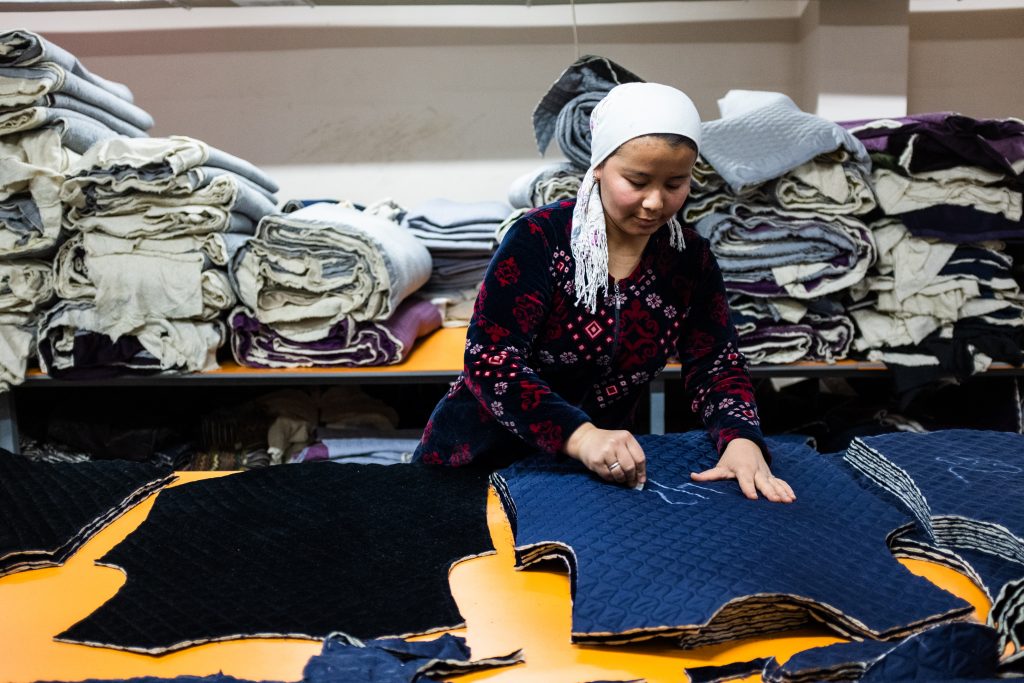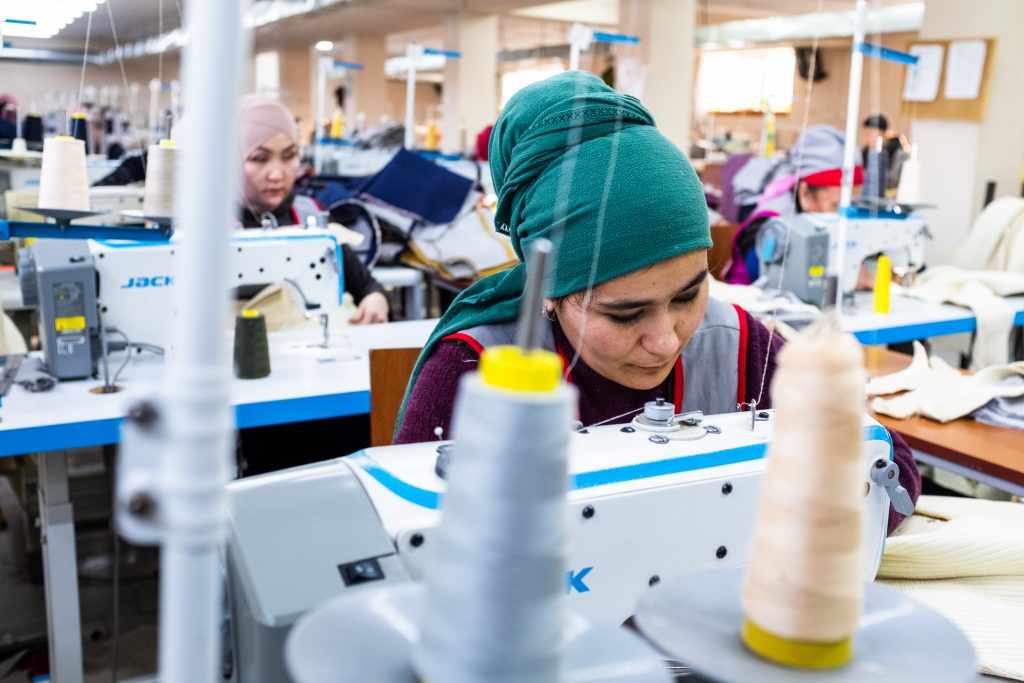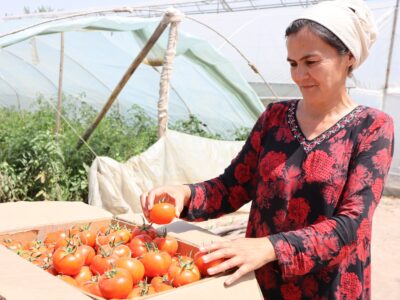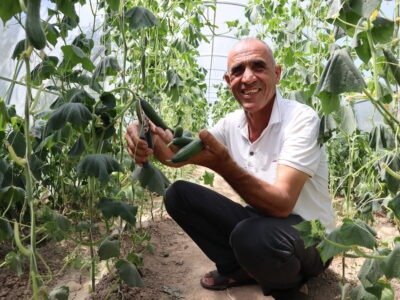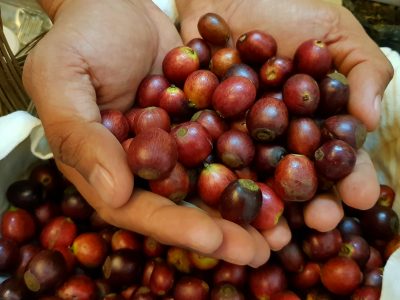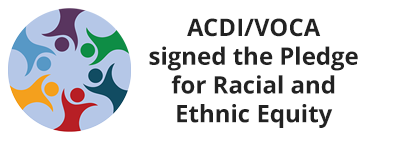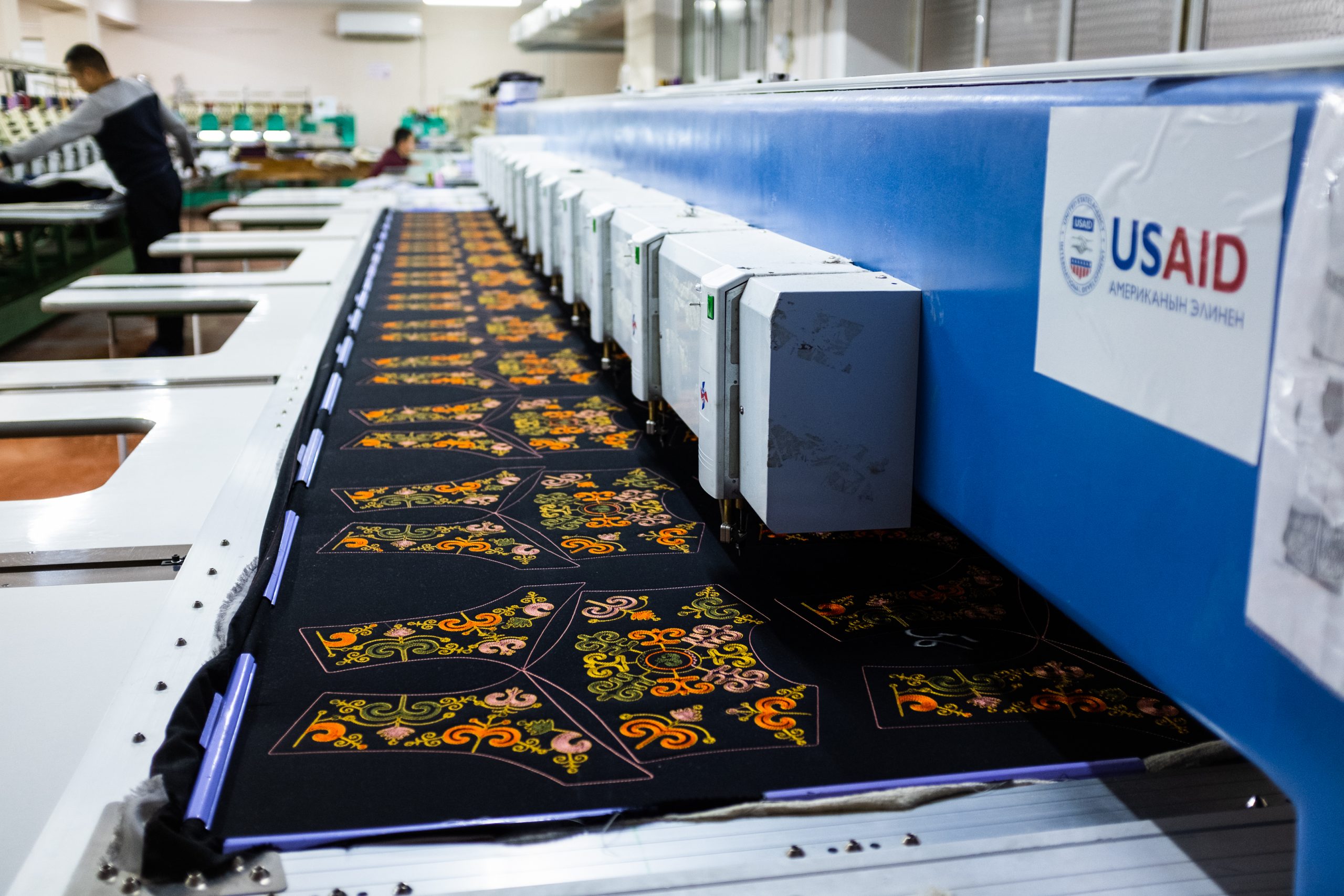
Nazirbek Toktonazarov had only graduated high school when he decided to leave his parents and move to Russia. Like thousands of young people, Toktonazarov was forced to migrate to another country because he had no prospect of obtaining a job in his hometown. He left to secure a poverty-free life for his relatives.
Toktonazarov spent 2007 to 2017 working odd jobs at construction sites and grocery stores across Russia. When he returned home to Kyrgyzstan, it took him two years to find a good, well-paying job.
His in-laws connected him to Muras Apparel Factory. That is where he and his wife, Gulmira, started their new careers as apparel cutters. Now they have stable jobs and even live in the factory’s dormitory, where they stay for free.
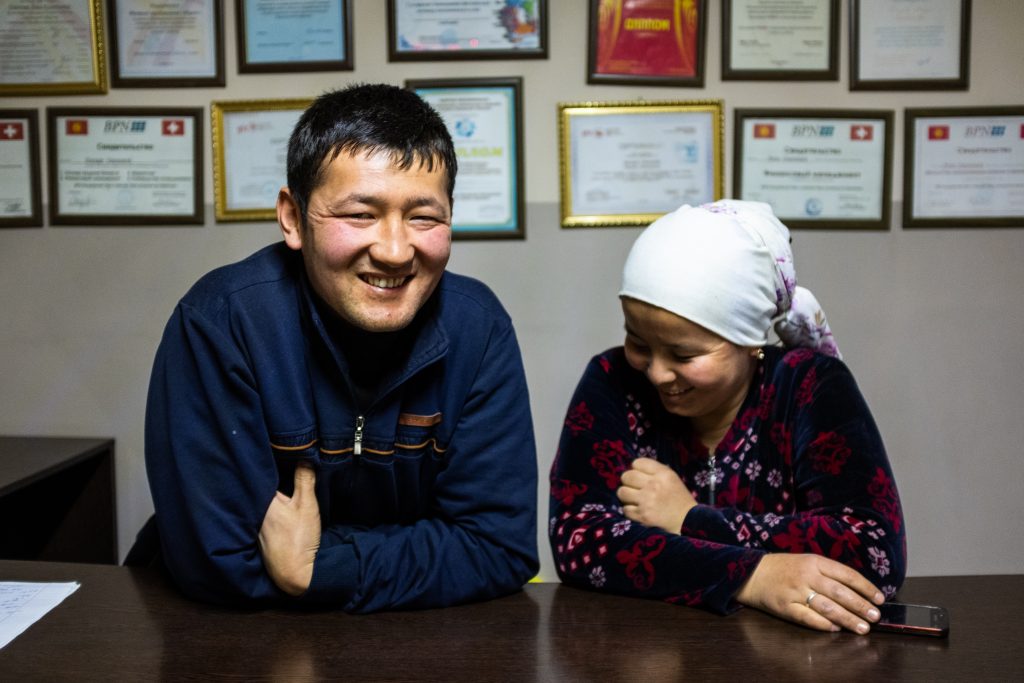
Apparel Factory Connects Local People with Local Work
“Life was quite difficult for us after I returned from Russia. And after wandering, we were hired to the factory. At first, we hardly understood what we had to do, but we learned and mastered the job after two months.”
— Nazirbek Toktonazarov, an apparel cutter at the Muras Apparel Factory
Toktonazarov’s experience as a migrant worker is not unique. External labor migration has progressively increased over the past few years. The Kyrgyz State Migration Service reported in 2017 that 700,000 Kyrgyz citizens were migrant workers. The migration rate is accelerating each year as more people seek out higher employment opportunities and living standards. This especially affects younger populations, since 60 percent of these migrants are between ages 15 and 29.
To combat this, from 2018 to 2023, ACDI/VOCA is implementing the USAID Enterprise Competitiveness Project, which supports Kyrgyzstani enterprises like Muras Apparel Factory in creating local jobs.
When Muras’s founders could not find local skilled labor, they chose to educate their employees. They hired locals and taught them sewing skills to transform Kyrgyz citizens into competitive workers with safe, reliable jobs and living standards. They also provided employees with free, regular meals and housing, which made them more effective on the job.
This vision of reducing poverty and eradicating labor migration began with Muras founder Dinara Omonova. Omonova started her business in 2008 with three sewing machines.
Stand-Out Designs Help Retain Muras’s Market Share
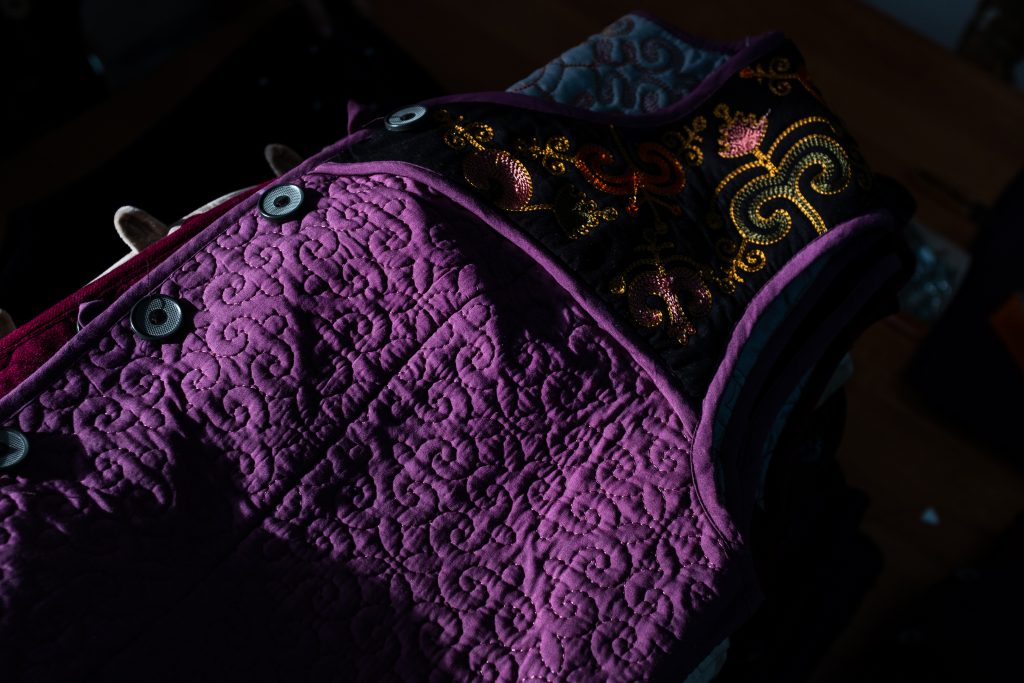
In 12 years, the company has grown from a small business to the leading sewing facility in southern Kyrgyzstan. It is a female-owned, modern apparel factory that produces outerwear clothing in the traditional Kyrgyz style, from chapans to quilted jackets, vests, and eco-friendly accessories.
But because Muras has been so successful, its competitors have struck back. Omonova recounts that her competitors are constantly stealing her designs. She responds by pushing Muras to evolve and introduce innovative designs to maintain customers’ attention.
But this production requires lengthy, multi-step processes. Partnership with the USAID Enterprise Competitiveness Project helps Muras keep pace with the global and increasingly competitive textile and garment manufacturing industry. USAID granted Muras $57,800-worth of modern equipment. Muras invested $48,408 into renovations and will invest another $43,953 in additional equipment. By updating its facility, Muras will expand its clothing range and increase its production volume. This growth has created 71 additional jobs, primarily for women in the south who otherwise have limited employment opportunities. In the next two years, Muras will create an additional 180 jobs.
Muras is already regionally connected, but its production challenges preclude it from growing. Only 20 percent of its output stays in the south, while 70 percent goes straight to Bishkek, where it is sold through Dordoi and Kiyal bazaars. The other 10 percent is shipped to Kazakhstan.
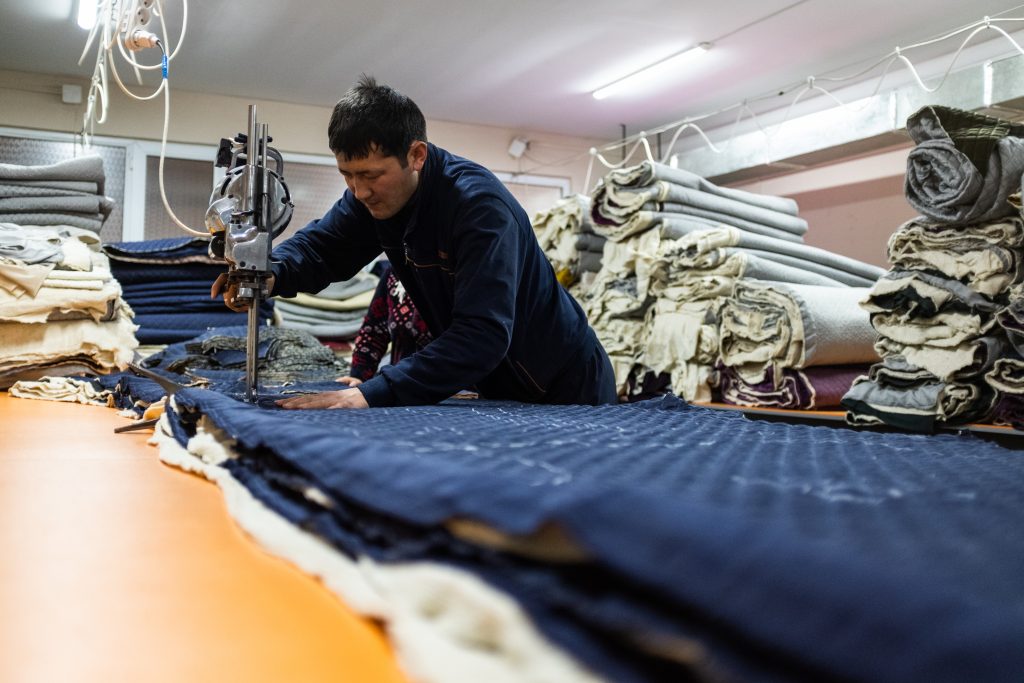
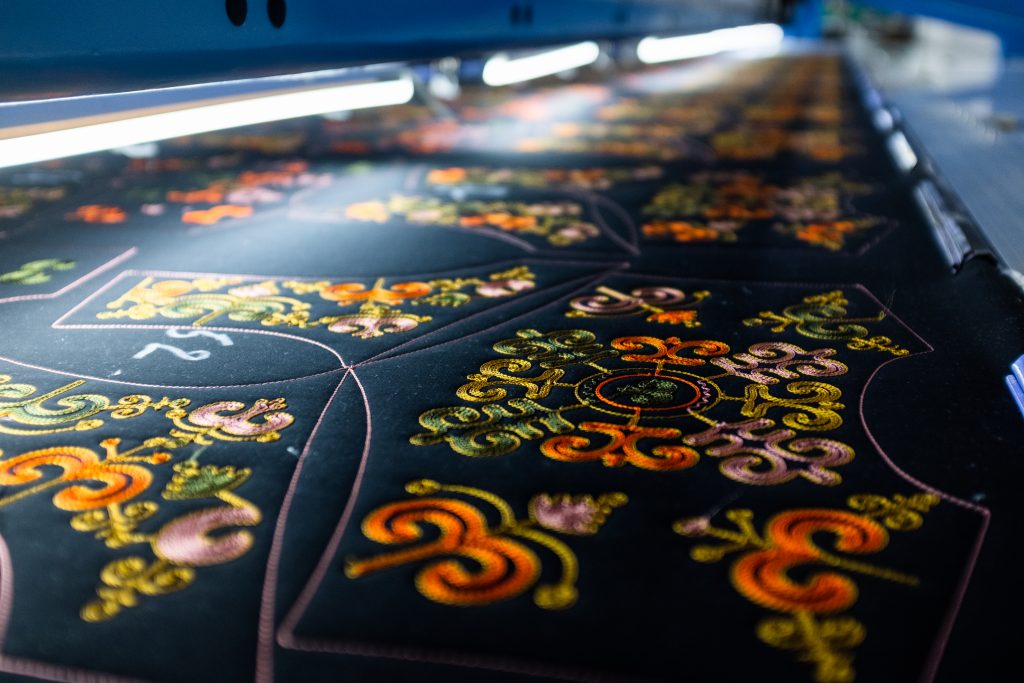
USAID helped Muras procure modern embroidery equipment and a textile printer. This new manufacturing technology lets Muras produce elaborate patterns and garment cutouts quickly, allowing it to fill the market with designs that stand out. Muras is now preparing to enter new markets in Russian regions.
Helping Entrepreneurs Grow and Create More Jobs
With their extra income, the Toktonazarovs built a house in Jalal- Abad and bought a car. Toktonazarov strongly values having the chance to work close to home. “I would rather carry five kilograms of fabric on my back at home than carry one sack of construction cement far from my homeland,” he said.
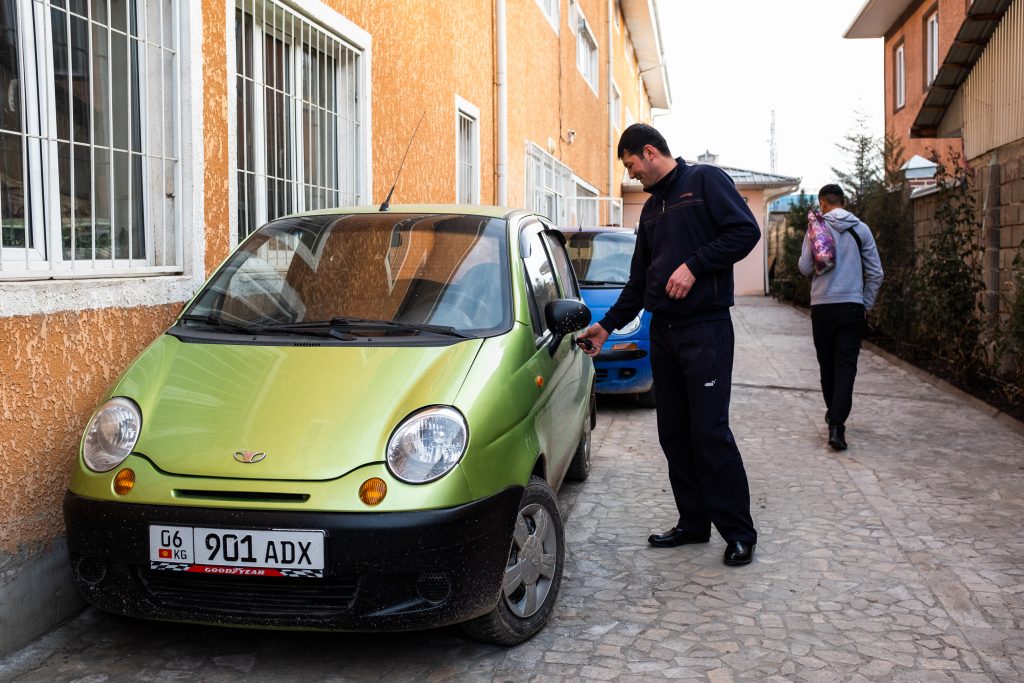
Meanwhile, Omonova is using her success to combat generational poverty. She involves her daughter, Ayana, in managing the factory.
“I started my business for my daughters to make sure they had a quality of life and that they had their work and independence. Designing a new garment style and managing production control requires profound knowledge ad finding the best fit. I educate my daughters [on] how to manage and control all processes for successful outcomes”
— Dinara Omonova, founder of Muras Apparel Factory and partner of the USAID Enterprise Competitiveness Project
Omonova plans to expand Muras’s distribution chain and open showrooms in Bishkek and Osh. She wants to expand its range, fill the market with quality products, and create better job opportunities for Kyrgyz citizens.
Through projects like the USAID Enterprise Competitiveness Project, USAID aims to create 19,000 new jobs in the country in the next three years. USAID is identifying entrepreneurs like Omonova and investing in their businesses so that they can become more efficient and continue to empower families like the Toktonazarovs.
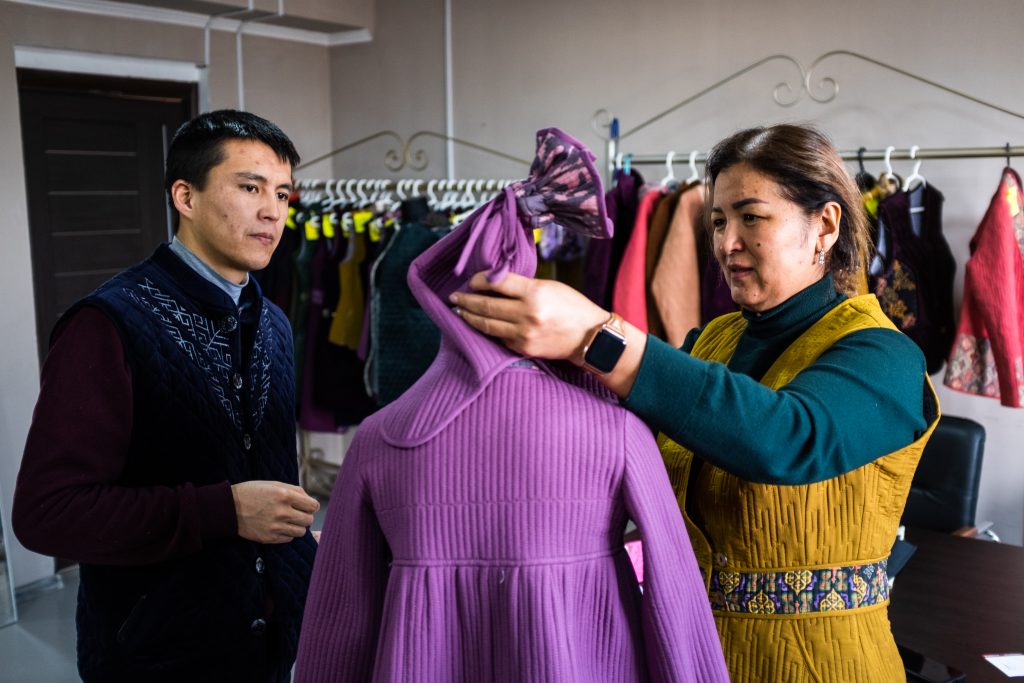
Learn more about the USAID Enterprise Competitiveness Project.
Learn more about our work in the Kyrgyzstan.

